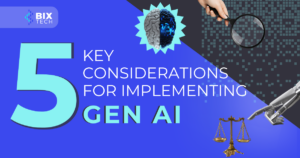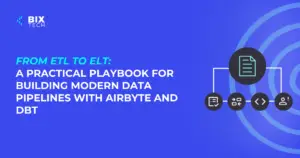Business Intelligence Demystified: Your Complete Guide to Smarter Data-Driven Decisions

Sales Development Representative and excited about connecting people
In today’s digital era, data is everywhere. From smartphones and smartwatches to social media, sensors, and online transactions, we are constantly generating and consuming massive amounts of information. But how can organizations make sense of this data deluge and use it to their advantage? This is where Business Intelligence (BI) steps in, transforming raw data into actionable insights that power smarter decisions.
In this comprehensive guide, you'll learn what Business Intelligence is, how it works, its core components, and the real impact it can have across every sector of your business.
What is Business Intelligence?
Business Intelligence is more than just a buzzword—it's an ecosystem of tools, strategies, and infrastructure designed to help organizations make informed, data-driven decisions. At its core, BI collects data from diverse sources, processes it, and presents it in a way that’s easy to understand and act upon.
Making Sense of the Data Explosion
Every action generates data: interacting with an app, browsing a website, using GPS, or even visiting a doctor’s office. The challenge isn’t gathering data—it’s transforming these raw numbers into valuable information. In the past, spreadsheets and simple databases sufficed, but the sheer magnitude of today’s data demands advanced solutions.
Modern BI solutions automate and optimize the data collection, processing, and visualization journey, making it possible for decision-makers to access critical insights at a glance. Interactive dashboards, for example, allow users to monitor business performance, spot trends, and react to opportunities or threats in real time.
The Building Blocks of Business Intelligence
A robust BI system is built on four foundational pillars:
1. Data
Data is the lifeblood of BI. Inputs come from countless information systems—CRM software, e-commerce platforms, IoT sensors, and more. Managing these data streams effectively is the first step to extracting meaningful insights.
2. Infrastructure
Behind every powerful BI solution is a strong technical backbone. This includes servers, databases, cloud platforms, and secure networks that store, integrate, and transmit information seamlessly. The scale and complexity of your infrastructure will depend on your organization’s size and data needs.
3. Front-End Tools
BI front-end tools are what users interact with. They translate complex analytics into intuitive dashboards and reports, making it easy for stakeholders to explore data without a technical background. A user-friendly interface is crucial—after all, BI is only valuable if people actually use it.
4. Human Expertise
Even the smartest software needs skilled professionals to implement, manage, and interpret BI solutions. Data analysts, BI developers, and business strategists are instrumental in turning data into strategic advantage. Their expertise helps bridge the gap between technical capabilities and real-world business goals.
How Does Business Intelligence Work?
Business Intelligence follows a systematic cycle that transforms raw data into actionable knowledge. Here’s how the process unfolds:
- Data Collection & Organization: Gathering data from internal and external sources.
- Data Analysis & Visualization: Making data visible and understandable via dashboards and visual reports.
- Collaboration & Sharing: Distributing insights across teams for collaborative decision-making.
- Performance Monitoring: Continuously tracking business metrics to assess progress and identify areas for improvement.
- Informed Decision-Making: Using evidence-based insights to drive strategy and operational changes.
- Ongoing Optimization: Regularly evaluating outcomes and refining strategies to enhance performance.
By following this cycle, organizations can avoid guesswork and base their decisions on solid evidence.
Where Can Business Intelligence Be Applied?
The beauty of BI is its versatility—it delivers value across every department and industry. Let’s see how:
Finance
BI goes far beyond basic financial indicators. By analyzing a wide range of data, finance teams can pinpoint where resources are best allocated, identify cost-saving opportunities, and detect new revenue streams. For instance, BI can help organizations identify more durable materials for production or redirect funds to high-performing investments. Interested in how data is revolutionizing business? Dive deeper into the data science business revolution.
Sales and Commercial Operations
In today’s competitive landscape, understanding your customers is everything. BI tools empower sales teams to identify the best products or services for each client, tailor offers, and monitor sales team performance across regions and product lines. This level of insight enables highly personalized customer experiences, driving both acquisition and retention.
Marketing
Marketing thrives on data. With BI, marketers can track customer growth and satisfaction, segment audiences by region or behavior, and plan targeted campaigns with confidence. By integrating sales and marketing data, organizations can create hyper-personalized offers and pinpoint the optimal moment to engage each customer—maximizing ROI and customer satisfaction.
Logistics and Operations
Operational efficiency is key to profitability. BI streamlines logistics by automating cost calculations, monitoring supply chain performance, and forecasting production demands. By automating these analytics, organizations minimize human error and gain faster, more reliable insights. Curious how predictive analytics can take your operations to the next level? Explore our guide to predictive analytics strategies.
Data Visualization: The Key to Actionable Insights
One of BI’s greatest strengths is its ability to make complex data accessible. However, poorly designed dashboards can overwhelm users and obscure valuable insights. The best BI solutions present data clearly and visually, ensuring decision-makers can spot patterns—and act on them—without wading through endless spreadsheets.
The Real Impact of Business Intelligence
Implementing a BI solution isn’t just about technology; it’s about transforming your organization’s culture to embrace evidence-based decision-making. By providing a single source of truth, BI breaks down silos, fosters collaboration, and empowers every team member to contribute to growth.
Whether you’re optimizing financial processes, personalizing customer journeys, or streamlining logistics, Business Intelligence is the strategic engine that turns raw data into real business value.
Ready to Unlock the Power of Business Intelligence?
The digital revolution is here, and organizations that harness the power of Business Intelligence are poised to lead the way. If you’re ready to elevate your decision-making and future-proof your business, now’s the time to invest in a robust BI strategy. For more on how BI and analytics differ—and why both matter—check out our in-depth look at Analytics vs. BI.
Transform your data. Transform your business. With Business Intelligence, the future is in your hands.









